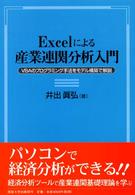- ホーム
- > 洋書
- > 英文書
- > Science / Mathematics
Full Description
This book comprehensively analyzes Industry 6.0 and its integration with the UN's Sustainable Development Goals (SDGs) in the construction industry. Practical strategies and real-life case studies also help readers bridge the gap between advanced digital technologies and sustainable practices.
As the construction industry trends towards increased digitalization and an emphasis on human-centered principles, it is increasingly necessary to integrate these into traditional construction management methods to ensure sustainable practices. This book, therefore, provides a comprehensive exploration of how Industry 6.0 technologies can be harnessed to achieve sustainability goals in the construction industry. It addresses both theoretical and practical aspects and takes a holistic approach in which not only technological aspects of Industry 6.0, but also the social and environmental aspects of integrating Industry 6.0 with SDGs in the construction sector are covered. Throughout, it presents appropriate case studies to demonstrate best practice implementations and then draws appropriate conclusions and recommendations for researchers and practitioners. Readers will be able to apply this knowledge to their work and research, whether within the construction industry or working on policy or research into its methodologies and technologies.
Given the innovative nature of the subject matter and its substantial practical, theoretical, and societal implications, this book is a leading resource for industry practitioners and policymakers. Beyond its industrial significance, this is also an essential text for academics that presents fresh research avenues and facilitates the integration of advanced technologies with sustainable practices.
Contents
1. Introduction 2. Origins of Industry 6.0 3. Relationship of IR 6.0 with the Construction Industry 4. Construction's Role in SDGs and Industry 6.0 Integration 5. Worldwide Regulatory Frameworks 6. Key Findings from Case Studies 7. Defining the Future of IR 6.0 in Construction - Recommended Directions 8. Holistic Framework Proposal and Conclusion








